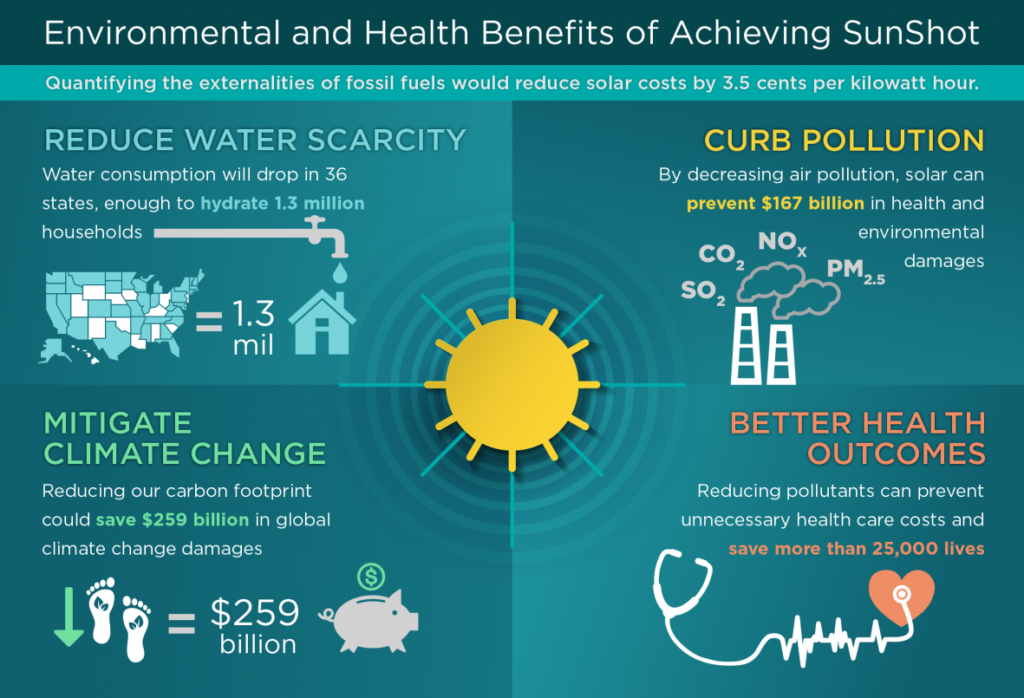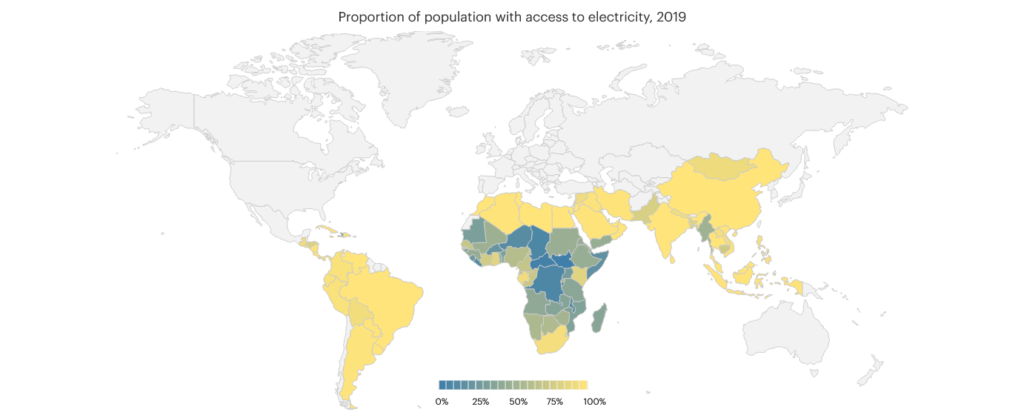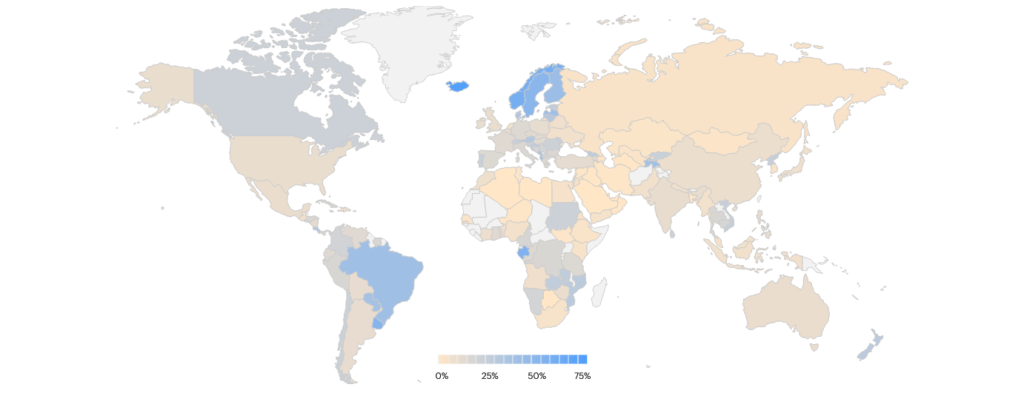Everything You Need to Know About Alternative Energy
23 March 2021 – by Viktor Tachev Comments (0)
For the past 150 years, we have relied on fossil fuels like coal and oil as sources of energy to power everything in our day-to-day lives – from light bulbs to vehicles and factory production. As a result, today, we have historically high levels of released greenhouse gases and a glaring climate change problem. We can no longer ignore the issues and should finally find a way to adequately address them. The primary tool to help us do that and move to a more sustainable future is alternative energy.
What is Alternative Energy?
Alternative energy unites all energy sources other than fossil fuels (such as coal, petroleum, and diesel). It is either nuclear or collected from natural sources and has an infinite supply.
What is the difference between alternative energy & renewable energy?
Alternative energy is a broader category than renewable energy. It unites all types of sustainable energy types but also includes nuclear power. The name of the group comes from the fact that it provides an alternative to conventional fossil fuels like coal and oil.
In the long-term, the goal of humanity is to replace fossil fuels entirely with alternative energy sources which are clean energy.
The energy from alternative sources serves different purposes. These include air and water heating/cooling, electricity generation, transportation, and off-grid (rural) energy services.
Types of Alternative Energy
There are several types of alternative energy sources, including:
- Sunlight
- Wind
- Water (tides, waves, and rain)
- Geothermal heat
- Biomass
- Nuclear power
Aside from biomass, where the scientific evidence isn’t conclusive, the common factor between all renewable energy sources is that they are carbon-neutral. Besides, their supply is unlimited, at least in the foreseeable future.
The advantages of Alternative Energy sources
The primary advantages of alternative energy include:
Infinite supply
We consider the supply of alternative energy infinite because the process behind its generation isn’t time-sensitive in respect to a human timescale. The sun, the wind, and the oceans, for example, have been around for billions of years. Even if humanity used alternative energy sources from its early rise, they wouldn’t have run out and they will continue to be around for centuries ahead.
On the other hand, fossil fuels’s supply is finite because the way they form in the nature is way slower than the rate at which we consume them. In other words, their days are numbered as we expect them to run out in the not-so-distant future.
Harmless generation
Nuclear energy, aside, extracting or producing alternative energy, doesn’t require such expensive techniques. Besides, wind turbines, hydropower facilities, solar PVs, and geothermal production sites don’t harm the environment.
Due to being available on the surface, they don’t require any extraction or digging. This means there is no effect on the soil, the fauna, and the flora at the extraction sites.
Can help tame climate change and build a sustainable future
The list of environmental benefits that the alternative energy transition will ensure is endless. Among the most essential ones are reduced air pollution, decreased water consumption, better health outcomes, and more. Most importantly, it will help us slow down and effectively control global warming. According to expert projections, renewables can ensure 75% of the energy-related CO2 emission reductions needed.

Why a Transition to Alternative Energy is Necessary
Aside from the environmental benefits, alternative energy can bring us positives on several other fronts and help us address various challenges.
Growing population with growing energy needs
By 2100, the world’s population will reach approximately 10.9 billion. This will drive a gradual increase in the energy demand, which might double by 2050. If we continue to stick to fossil fuels, we will exacerbate the implications of global warming and significantly harm the nature on our planet.
Much cheaper and affordable energy
The price of solar PV panels has decreased by over 99% during the last four decades. Today, it is among the cheapest and easiest-to-install energy generation systems. That is why PwC predicts that by 2050, Europe and Africa might be running on 100% renewable energy.
Furthermore, every dollar invested in the global shift to alternative energy will save between $3 to $7 in reduced subsidies and externalities, related to climate change, according to an IRENA analysis. Considering this scenario, the total savings by 2050 will range between $45tn and $140tn.
Benefits for the economy
Aside from the positive effect on the environment, a shift to alternative energy will also benefit the economy. According to studies, the renewable energy sector is capable of creating 10x more jobs than the fossil fuels one. In 2020, the renewable energy jobs hit 11.5m worldwide. In addition, they have also proven to show more inclusion and a better gender balance.
On a macro level, a shift to alternative energy will boost global GDP by 2.5% in 2050, with a cumulative gain of $99tn from 2019 to 2050.
Can empower energy access among regions that are currently off the grid
Although the number of people without electricity dropped to 770m in 2019, the progress continues to be uneven. Furthermore, this positive trend is now being reversed by the COVID-19 pandemic. However, the easier installation and maintenance, alongside the reduced costs of alternative and renewable energy, can help decrease this number and bring electricity even to the underdeveloped regions in the world.

The Potential and the Future for Alternative Energy
The primary enabler for the shift towards alternative energy was the adoption of the United Nations Sustainable Development Goals (SDGs) in 2015, which marked a new level of political recognition of the importance of the matter from an economic, environmental, and societal point of view.
Global shift away from fossil fuels
This unfolded a series of moves within the political stage and sped-up the introduction of various new measures. The initiatives range from regulatory and economic instruments to fiscal incentives, codes and standards, grants, subsidies, and more. Some examples include higher taxes or total ban of diesel vehicles, industry carbon taxes, and MEPS for domestic appliances, strategies for replacement and optimization of household fossil fuels energy generation systems, international climate agreements, energy efficiency community programs, and more.
Today, there are over 5500 local and international alternative energy policies currently in force or planned for the short-term future. As of 2019, over 100 cities worldwide boast at least 70% renewable energy, while others aim at reaching 100%. These measures are already starting to have their effect. As of 2018, modern renewables have passed 10% of total final energy consumption globally.

Despite this progress, there is a lot more to do if we want to meet the 2030 energy intensity target rate. Global energy intensity is the ratio of primary energy supply to GDP. It is a key indicator for tracking global energy efficiency progress. While the original target was 2.6% by 2030, currently, we are hitting figures of just 1.7%.
The next decade presents us with the opportunity to make up for the slow performance. While much is done on the policy front, including the introduction of mandatory codes and energy efficiency standards, the critical aspect that can make a difference is revitalizing and encouraging investments and the broader access to private capital for alternative energy projects.
by Viktor Tachev
Viktor has years of experience in financial markets and energy finance, working as a marketing consultant and content creator for leading institutions, NGOs, and tech startups. He is a regular contributor to knowledge hubs and magazines, tackling the latest trends in sustainability and green energy.
Read more